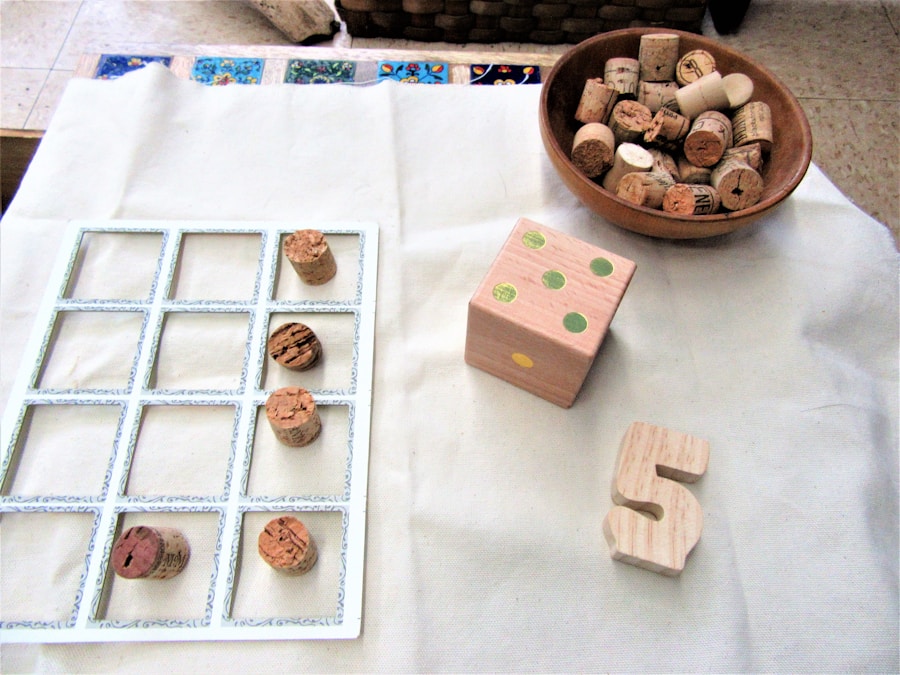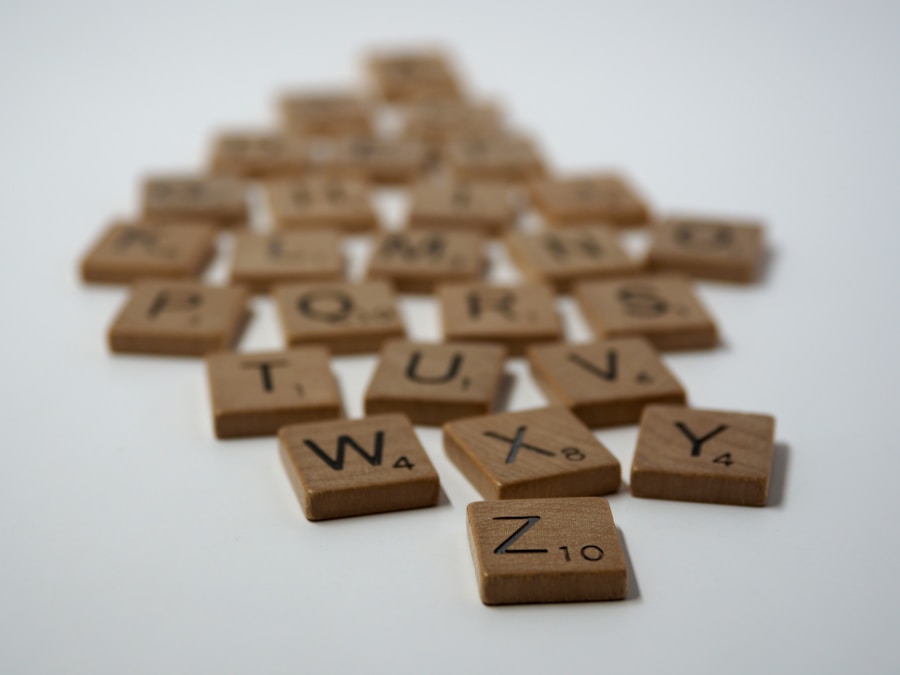
Sight words are a collection of commonly used words that children are encouraged to recognize instantly without needing to sound them out. These words often include high-frequency terms that appear frequently in written texts, making them essential for developing reading fluency. The concept of sight words is rooted in the understanding that many words do not follow standard phonetic rules, making them difficult for early readers to decode.
For instance, words like “the,” “and,” “is,” and “you” are often categorized as sight words because they are encountered so frequently in children’s literature and everyday reading materials. The recognition of sight words is crucial for young readers as it allows them to read more smoothly and with greater comprehension. When children can identify these words at a glance, they can focus on understanding the meaning of sentences rather than getting bogged down by decoding each individual word.
This ability to recognize sight words contributes significantly to overall reading fluency, which is the ability to read text quickly and accurately. As children become more proficient in recognizing sight words, they gain confidence in their reading abilities, paving the way for more complex literacy skills.
Key Takeaways
- Sight words are commonly used words that young children should recognize by sight rather than sounding them out.
- Sight words are important for early readers because they make up a large percentage of the words in children’s books and are essential for fluent reading.
- To teach sight words to early readers, use a variety of methods such as flashcards, games, and repetition.
- Common sight words for early readers include: the, and, is, it, in, to, you, that, he, was, for, on, are, as, with, his, they, I, at, be, this, have, from, or, one, had, by, words, but, not, what, all, were, we, when, your, can, said, there, use, an, each, which, she, do, how, their, if.
- Activities to help early readers learn sight words include: sight word scavenger hunts, sight word bingo, sight word memory games, and sight word writing practice.
Why are Sight Words Important for Early Readers?
Sight words are essential for developing early literacy skills. They make up a significant portion of the text that children encounter, and mastering them can dramatically enhance a child’s fluency and comprehension.
### The Prevalence of Sight Words
Research shows that approximately 50-75% of the words in early reading texts are sight words. This means that recognizing these words can free up cognitive resources for understanding the context and meaning of the text.
### Building Blocks for Advanced Reading Skills
When children can quickly recognize sight words, they can focus on developing critical thinking skills and fostering a love for reading. Familiarity with sight words also helps children tackle more complex texts, allowing them to engage with a wider range of literature and ideas.
### Unlocking a Lifetime of Reading
Mastering sight words is crucial for developing a strong foundation in reading skills. By recognizing these words, children can unlock a lifetime of reading, exploring new ideas, and developing a deeper understanding of the world around them.
How to Teach Sight Words to Early Readers

Teaching sight words effectively requires a combination of strategies that cater to different learning styles. One popular method is the use of flashcards, which can be an engaging way for children to practice recognizing sight words. Flashcards can be used in various ways, such as through games or timed drills, to make the learning process enjoyable.
For instance, parents or educators can create a matching game where children match sight word cards with corresponding images or sentences that use those words. This not only reinforces recognition but also helps children understand how these words function within sentences. Another effective approach is incorporating sight words into daily routines and activities.
For example, parents can label common objects around the house with their corresponding sight words, such as “door,” “table,” or “chair.
Additionally, reading aloud together provides an excellent opportunity to highlight sight words within context. As adults read stories, they can pause and point out sight words, encouraging children to recognize them as they appear in the text.
This contextual learning reinforces the connection between spoken and written language.
Common Sight Words for Early Readers
| Word | Frequency |
|---|---|
| the | 220 |
| and | 120 |
| to | 100 |
| is | 90 |
| in | 80 |
| it | 70 |
| you | 60 |
| for | 50 |
| on | 40 |
| at | 30 |
Common sight words are typically categorized into lists that educators and parents can use as a reference when teaching young readers. One of the most widely recognized lists is the Dolch Sight Words list, which includes 220 service words and 95 nouns that are essential for early literacy development. The Dolch list is divided into grade levels, allowing educators to tailor instruction based on a child’s developmental stage.
For instance, kindergarteners might focus on simple words like “go,” “see,” “can,” and “up,” while first graders may progress to more complex terms such as “come,” “here,” “help,” and “make.” Another popular list is the Fry Sight Words list, which expands on the Dolch list by including 1,000 high-frequency words organized by frequency of use in written English. The Fry list is particularly useful for older students who may still struggle with sight word recognition. Both lists serve as valuable resources for parents and educators seeking to enhance early reading skills by providing a structured approach to teaching these essential vocabulary terms.
Activities to Help Early Readers Learn Sight Words
Engaging activities can significantly enhance a child’s ability to learn and retain sight words. One effective activity is creating a “sight word scavenger hunt.” In this game, parents or educators can hide flashcards with sight words around a designated area, such as a classroom or home. Children can then search for these cards and read them aloud when they find them.
This interactive approach not only makes learning fun but also encourages physical movement, which can help reinforce memory retention. Another engaging activity is using art and crafts to reinforce sight word learning. For example, children can create a “sight word collage” by cutting out letters from magazines or using colored paper to form their sight words.
This hands-on activity allows children to explore their creativity while simultaneously reinforcing their recognition of these important terms. Additionally, incorporating technology can also be beneficial; there are numerous educational apps and online games designed specifically for teaching sight words through interactive play.
Tips for Parents and Educators to Support Early Readers with Sight Words

Supporting early readers in their journey to master sight words requires patience and creativity from both parents and educators. One essential tip is to maintain a consistent practice routine without overwhelming the child. Short, frequent sessions are often more effective than longer, infrequent ones.
For instance, dedicating just 10-15 minutes each day to practice sight words can lead to significant improvements over time. This consistency helps reinforce learning while keeping the experience enjoyable. Another important strategy is to celebrate successes, no matter how small.
Positive reinforcement can motivate children to continue practicing their sight words with enthusiasm. Parents and educators can use praise, stickers, or small rewards when children successfully recognize or spell sight words correctly. Additionally, incorporating storytelling into practice sessions can help contextualize sight words within narratives, making them more memorable and meaningful for young readers.
Resources for Teaching Sight Words to Early Readers
A wealth of resources is available for parents and educators looking to teach sight words effectively. Numerous websites offer printable flashcards, worksheets, and games specifically designed for teaching sight words. Websites like Education.com and Teachers Pay Teachers provide a variety of materials that cater to different learning styles and preferences.
These resources often include interactive activities that make learning engaging and fun.
These books often feature repetitive text that emphasizes high-frequency sight words within engaging stories or illustrations.
Series like “Bob Books” or “I Can Read!” provide structured reading materials that help reinforce sight word learning through contextually rich narratives. Utilizing these resources can enhance the teaching experience and provide children with ample opportunities to practice their sight word recognition skills.
The Impact of Sight Words on Early Reading Success
The mastery of sight words has a profound impact on early reading success and overall literacy development. Children who develop strong recognition skills for these high-frequency terms tend to experience greater fluency in their reading abilities. This fluency not only enhances their enjoyment of reading but also fosters a deeper understanding of texts as they progress into more complex literature.
Furthermore, research has shown that early proficiency in sight word recognition correlates with improved comprehension skills later on. As children become adept at recognizing these foundational terms, they are better equipped to tackle new vocabulary and more challenging texts in the future. The ability to read fluently allows young readers to engage with stories more fully, fostering a lifelong love of reading and learning that extends beyond the classroom setting.
In conclusion, the importance of sight words in early literacy cannot be overstated. They serve as essential building blocks for developing reading fluency and comprehension skills among young learners. By employing effective teaching strategies, utilizing engaging activities, and leveraging available resources, parents and educators can significantly enhance children’s reading experiences and set them on a path toward lifelong literacy success.
If you are interested in learning more about sight words, you may want to check out the article Unit 1: Sight Words Unveiled from Learning English with Sight Words. This article delves into the importance of sight words in the English language and provides valuable insights into how to effectively incorporate them into your learning routine. It is a great resource for anyone looking to improve their reading and writing skills through the mastery of sight words.
FAQs
What are sight words?
Sight words are commonly used words that young children are encouraged to memorize as a whole by sight, so that they can automatically recognize these words in print without having to use any strategies to decode them.
Why are sight words important?
Sight words are important because they make up a large percentage of the words that children encounter when they read. By memorizing sight words, children can improve their reading fluency and comprehension.
How are sight words taught?
Sight words are often taught through various methods such as flashcards, games, and repetitive exposure in reading materials. Teachers and parents use different techniques to help children recognize and memorize sight words.
What is the significance of sight words in early literacy?
Sight words play a crucial role in early literacy as they form the foundation for reading and writing. By recognizing and understanding sight words, children can build their vocabulary and become more proficient readers.
Can sight words vary by language?
Yes, sight words can vary by language as they are specific to the vocabulary and language structure of each language. Different languages have their own set of commonly used words that children are encouraged to memorize.



